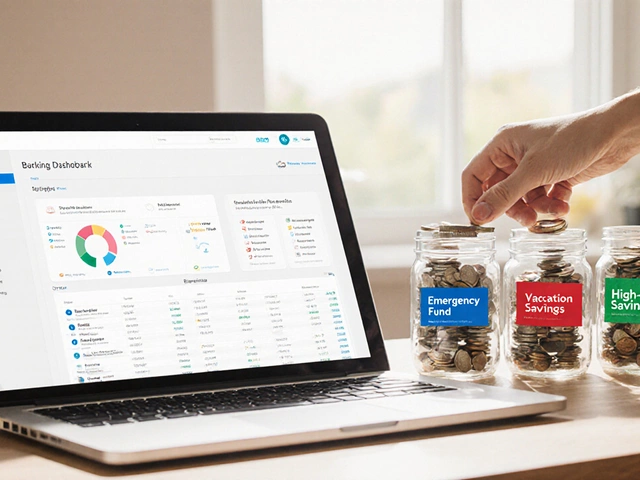
Thinking about getting into stocks but not sure where to start with your investment? You're not alone. It can be tempting to plunge headlong into the stock market, especially in today's buzz of online trading. But hold up! Before making any financial commitments, it's essential to figure out just how much a beginner should invest.
Experts often suggest starting small. We're talking amounts you're comfortable losing without breaking a sweat. Stocks can be unpredictable, and while the aim is to grow your investment, you need a safety net when things don't go as planned.
So, which magic number should you kick off with? Some folks say $500, others might advise $1,000—but it's not one-size-fits-all. Think about your financial situation first. It's wise to invest money that you won't need for essentials like rent or groceries. And don't touch your emergency fund!
Always remember, your initial investment should be just the start of your journey. The stock market's a bit like learning to ride a bike—wobbly at first, but you'll get smoother the more you practice. So, start small, stay informed, and gradually increase your investment as you gain confidence.
- Setting Realistic Expectations
- Starting Small with Your Investments
- Understanding Your Financial Goals
- Factoring in Risk Tolerance
- Learning and Growing Over Time
Setting Realistic Expectations
When diving into the world of beginner investing, it's critical to set expectations that are grounded in reality. So let's break down what you should really expect when putting your money into stocks.
The stock market isn't a 'get-rich-quick' scheme. Sure, you might hear stories of folks who struck gold overnight, but realistically, investing in stocks is more like a marathon than a sprint. The market can fluctuate daily—sometimes wildly—and it’s crucial to understand that your investment might not grow initially or could even lose value.
History and Trends
Historically, the stock market has offered an average annual return of about 7% when adjusted for inflation. But—and here's the kicker—that's an average. Some years might see a 10% increase, while others could experience a decline. Keep this range of volatility in mind as you decide how much to invest.
Genuine Goals, Genuine Results
Your financial goals should drive your expectations. Are you aiming for retirement in 30 years, or looking to fund college tuition in 5 years? Your timeline will significantly impact how you measure success in the stock market. If your goals are realistic, you’re more likely to make strategic decisions aligned with long-term growth rather than short-term gains.
Common Pitfalls
- Expecting immediate high returns can lead to disappointment and rash decisions.
- Watching daily stock prices like a hawk can cause unnecessary stress. Instead, focus on overall trends and long-term performance.
- Getting caught up in hype—when a stock's touted as the next big thing, be wary. Always do your research.
Stay Informed
Last but not least, keep educating yourself. There's heaps of info out there from credible sources that can help shape your expectations. Whether through online courses, books, or chats with seasoned investors, growing your knowledge will help you set and adjust your investment expectations with wisdom.
Starting Small with Your Investments
Dipping your toes into the stock market can feel overwhelming, but starting small is a tried-and-true way to ease into it. As a beginner, it's all about gaining confidence without risking too much of your hard-earned cash.
The term 'small' is pretty subjective and can vary from person to person. For instance, if you're a student, starting with a couple of hundred dollars might be sensible. If you've got a steady income, a $500 to $1,000 initial investment could be a good starting point.
Here's a rule of thumb: Only invest money you're prepared to part with. This means avoiding using funds needed for essentials or emergency savings. Get comfortable with the idea that there's always a possibility of losing what you invest.
Benefits of Starting Small
Starting with a small amount allows you to test the waters without taking on massive risks. You can measure how well you handle the ups and downs of the market. Plus, you'll get to learn the ropes—figure out how to do stuff like trade stocks and read market trends without feeling swamped.
Starting small also gives you breathing room to identify your financial goals. It's a low-pressure way of learning what kind of stocks appeal to you—whether it's startups, tech giants, or something else entirely.
The Power of Compounding
Don't underestimate the magic of compound interest. Even with a modest starting sum, reinvesting dividends and holding onto your stocks strategically can grow your wealth over time. Think of this as small snowflakes turning into a snowball as your investments start to roll.
Practical Steps
- Set aside a specific amount you can invest safely.
- Research and choose a reliable brokerage platform with low fees.
- Open an account and transfer your chosen amount.
- Start your investment with low-cost index funds or ETFs to spread out your risk.
By starting small, you're already on the path to smarter investing without breaking the bank. Remember, it's not always about how much you invest, but how consistently you stick to your investment plan.

Understanding Your Financial Goals
Before you jump into the world of stocks, take a step back and ask yourself a crucial question: What are my financial goals? Trust me, having clear goals can make all the difference in the stock market. They guide your decisions and help you stay focused, even when things get a bit bumpy.
Are you investing to save for retirement, fund your kids' education, or maybe even buy a home? Whatever your goals, being specific is key. Knowing your endgame can shape how much you should be investing as a beginner and influence your risk tolerance.
Short-term vs Long-term Goals
Think about whether your goals are short-term or long-term. Short-term might be saving for a vacation, while long-term goals include retirement or buying a house. With short-term goals, you might prefer less risky investments. Long-term goals, on the other hand, usually better align with stocks since they tend to pay off over a longer period.
If you've set a long-term goal, history is in your favor. Markets generally grow over time, despite short-term ups and downs. For instance, the U.S. stock market has historically returned about 7% after inflation—a fact to remember when it feels like there's a storm brewing on Wall Street.
Balancing Risk and Reward
Once your goals are settled, ponder your risk tolerance. Can you handle seeing your investment dip in value, or would that keep you up at night? Understanding this can help you decide how aggressively you want to invest. It's like choosing between a rollercoaster or a carousel; both have their charms, but one’s much wilder!
It's worth having a quick chat with a financial advisor, especially if you're confused about setting or adjusting these goals. They can offer personalized advice and ensure your investment plan aligns with what you hope to achieve.
| Type of Goal | Example | Investment Strategy |
|---|---|---|
| Short-term | Vacation Fund | Low-Risk Bonds |
| Long-term | Retirement | Stock-rich Portfolio |
Remember, understanding your financial goals isn't just a one-time activity—it's something you should revisit as life changes. Keep checking in to make sure you're still on track, adapting as needed, and learning as you go. Happy investing!
Factoring in Risk Tolerance
Before diving into the stock market, it's crucial to understand your risk tolerance. Think of it as your comfort level with the ups and downs of your investments. Some people can handle the thrill of wild market swings, while others might lose sleep over a small dip.
First off, be honest about your ability to cope with potential losses. If the idea of losing even a small portion of your investment keeps you up at night, you might want to stick with more stable, low-risk options.
Assessing Your Financial Status
Risk isn't just about your mental state; it's also about your financial situation. Do you have stable income sources? Are your bills paid on time, and do you have a reliable emergency fund in place? If not, it's smart to focus on getting those ducks in a row before taking high risks in the stock market.
Know Your Investment Options
The stock market offers different types of investments, each with its own risk level. Bonds, for example, are generally safer than stocks but often offer lower returns. On the flip side, stocks can offer higher returns but are usually more volatile. Consider diversifying your portfolio to balance out the risk.
- Low risk: Bonds, CDs (Certificates of Deposit)
- Medium risk: Index funds, mutual funds
- High risk: Individual stocks, especially in volatile industries like tech or biotech
A Quick Self-Assessment
If you're unsure about your risk tolerance, take a few quizzes available online that can help. While not foolproof, these can give you a rough idea of where you stand and what type of investment strategy might suit you.
Remember, understanding your comfort with risk can make a huge difference in your stock investing journey. It can guide your decisions and help you build a portfolio that aligns with both your financial goals and your peace of mind.

Learning and Growing Over Time
So, you've made your first investment, and now you're wondering what comes next. Well, the stock market is a dynamic environment, and there's always something new to learn. Staying informed and evolving with the market is crucial to becoming a savvy investor over time.
Stay Informed
The world of stocks for beginners isn't static. Keeping up with the latest market trends and news is vital. Follow financial news from trusted sources, and consider reading books or taking courses on investing. Many brokers offer educational resources to help you understand the nuances of the market.
Analyze and Adapt
Reviewing your investments regularly is a must. Look at what’s working and what’s not. Over time, you’ll begin to spot patterns and understand how different global events impact your investments. This ability to adapt is key as the market evolves.
Set and Adjust Goals
Your financial goals will likely change as you grow more confident in investment decisions. Regularly revisiting your goals ensures they're still in line with your financial situation and aspirations. Not hitting a goal is okay—learn from it and tweak your strategy.
Connect with Other Investors
Engaging with fellow investors can provide invaluable insights. Online forums, social media groups, and local meet-ups are great places to share experiences and tips. Other investors could introduce you to diverse perspectives you hadn't considered.
Use Technology to Your Advantage
Today's technology provides tools like stock analysis apps and AI-powered prediction models to help you make informed decisions. Don't hesitate to leverage these tools to streamline your stock market tips learning process.
As you continue this journey, remember: investing is a marathon, not a sprint. Growth takes time, patience, and perseverance. Trust in your ability to learn and evolve with the market, and you'll likely see positive changes as the years roll by.








Write a comment